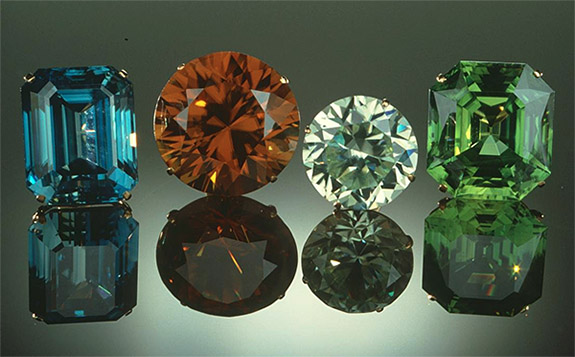Underrated and often misunderstood, zircon is the colorful alternative birthstone for December. Available in a wide range of brilliant hues — from red, orange, yellow, green to blue and brown — zircon is the oldest mineral on Earth.
Back in 2014, a tiny zircon crystal that scientists believed was 4.4 billion years old was helping to unlock the mysteries of how the Earth first formed. John Valley, a professor of geoscience, and his team at the University of Wisconsin-Madison, claimed that a translucent red zircon discovered in Western Australia’s remote Jack Hills region was nearly as old as the Earth itself.
Zircon likely got its name from the Persian word "zargun," which means “gold-hued.” The American Gem Society (AGS) also noted that zircon's name could be traced to the Arabic word "zarkun," which means "vermillion," the brilliant red pigment used to paint buildings in Biblical times.
While zircon has deep roots in science and history, contemporary jewelry buyers are often confused about the difference between zircon and cubic zirconia. Zircon is a naturally occurring mineral and cubic zirconia, also known as CZ, is a synthetic stone grown in a lab.
Zircon in its purest form is colorless and displays flashes of multicolored "fire" that can rival that of a diamond, according to the AGS. Other varieties of zircon owe their color to impurities in its chemical composition. The Smithsonian noted that zircons are most often cut as round brilliants to best show off their dispersion and brilliance.
The most popular color of zircon is blue, which happens to be the alternative birthstone for December. The others are tanzanite and turquoise.
The world's primary sources of zircon are Australia, Cambodia, Sri Lanka, Thailand, Tanzania, Myanmar, Canada and the US.
Zircon claims a hardness of 7.5 on the Mohs scale, compared to topaz (8), sapphire (9) and diamond (10).
The zircon gems in the photo, above, are from the Smithsonian's National Gem Collection. They were gifted by the Roebling fund and range in size from 48.3 carats to 105.9 carats. Two were sourced in Thailand and the other two were mined in Sri Lanka.
Credit: Photo by Dane A. Penland / Smithsonian.

